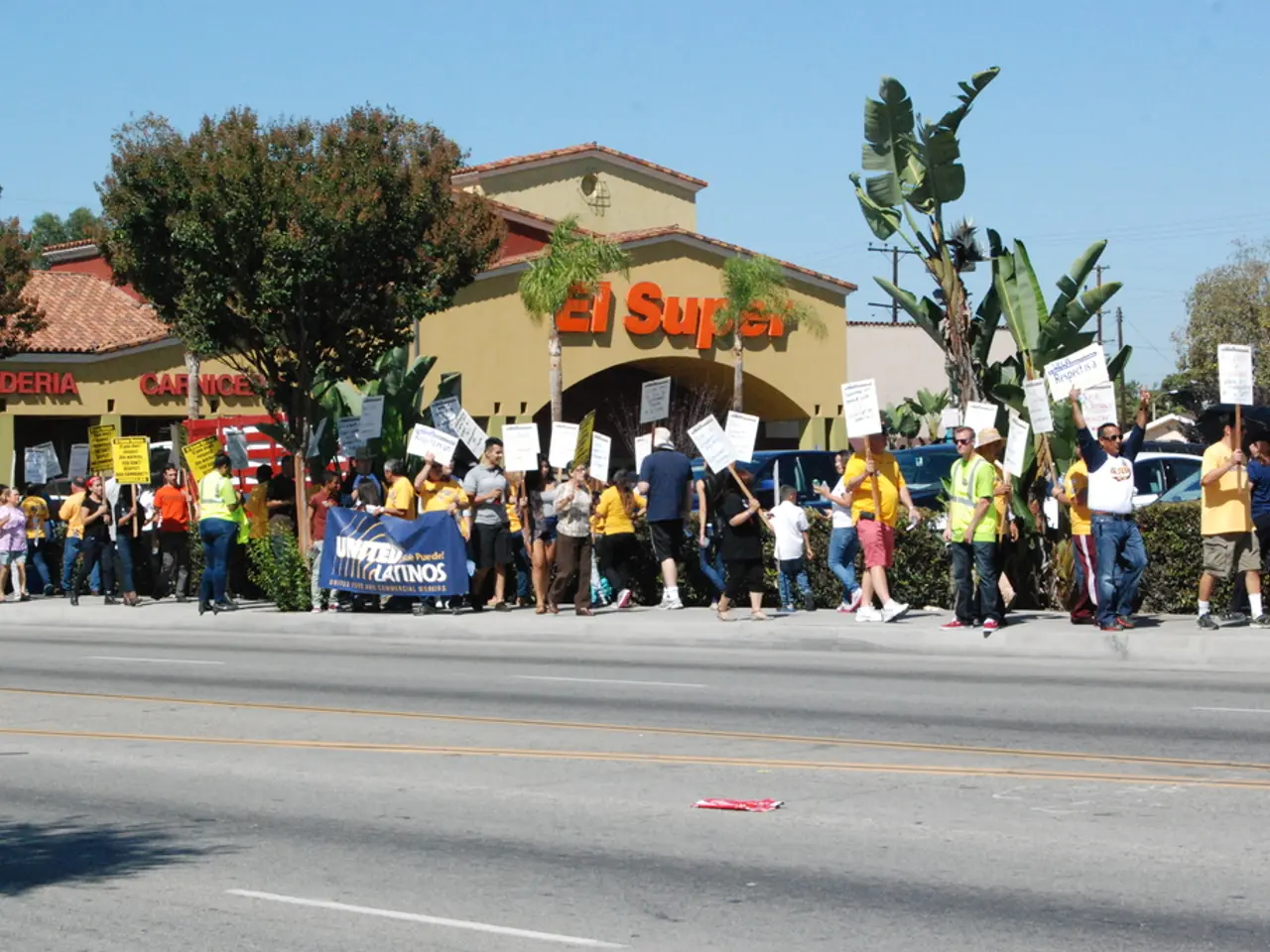Palestinians in Gaza Suffering Six Additional Fatalities Due to Enforced Hunger-Related Deaths
The humanitarian crisis in Gaza has been escalating since October 2023, with severe restrictions on aid delivery, widespread destruction of infrastructure, and rising malnutrition and displacement.
In a recent development, France started airdropping 40 tonnes of humanitarian aid to Gaza on Friday, marking an effort to alleviate the dire situation. However, the UN and other humanitarian officials have expressed concerns about the safety of such operations, as they can be dangerous.
Israeli restrictions on humanitarian aid deliveries have been a major concern. Since March 2, 2025, all aid deliveries have been blocked at Gaza’s borders, cutting off food, medicine, water, and fuel supplies. This blockade has created a risk of famine, with 90% of Gaza’s population displaced and nearly all experiencing hunger.
The destruction of neighborhoods, health facilities, schools, markets, and shops where people could redeem humanitarian food vouchers has exacerbated civilian vulnerability. Israeli military operations have been responsible for this destruction.
Due to paralysis of traditional aid channels and governance issues, some alternative aid operations, such as the US-Israeli-backed Gaza Humanitarian Foundation (GHF), have bypassed UN-led programs. However, aid seekers face dangerous conditions around these sites. Since May, at least 875 Gazans have been killed trying to get food, including many near GHF aid hubs and UN convoy routes.
The Palestinian Red Crescent Society has reported that one of its staff members was killed in an Israeli strike on its headquarters in Khan Younis. This incident underscores the violence and danger that aid workers face in their efforts to help the civilian population.
Child malnutrition is rising sharply due to sustained food shortages. Many deaths are recorded among those desperate to find food, reflecting extreme hunger and desperation. More than 90% of Gaza’s population is displaced, many sheltering in UNRWA schools and other damaged buildings.
Philippe Lazzarini, head of UNRWA, has stated that the manmade famine in Gaza has been largely shaped by the deliberate attempts to replace UN aid systems with the GHF. He has urged for a political decision to unconditionally open the crossings, highlighting that no time has been wasted anymore.
Despite the ongoing conflict, Hamas has refused to disarm without a sovereign Palestinian state. The Israeli ceasefire condition has been rejected by Hamas, adding another layer of complexity to the already dire situation.
In conclusion, the humanitarian crisis in Gaza requires immediate attention and action. The ongoing restrictions on aid delivery, destruction of infrastructure, violent incidents affecting civilians near aid sites, and escalating hunger and displacement have devastated the civilian population, directly impacting their survival and dignity. It is crucial for political decisions to be made to unconditionally open the crossings and ensure the safe and efficient delivery of aid to those in need.
- The increased violence and danger faced by aid workers in Gaza, such as the recent attack on a Palestinian Red Crescent Society worker, highlights the severe impact the crisis has on not only the health and nutrition of the population but also the general news and crime-and-justice sectors.
- The ongoing war-and-conflicts in Gaza, evidenced by the continuous destruction of infrastructure and the rejection of ceasefire conditions by Hamas, have led to a critical shortage of food, resulting in a sharp rise in child malnutrition and near-famine conditions for 90% of the population.
- Tensions escalated as the UN accused the Israeli government of intentionally hindering aid delivery by favoring the US-Israeli-backed Gaza Humanitarian Foundation over UN-led programs, causing issues in food, medicine, water, and fuel supply, which in turn influence food, health, and wider politics in Gaza.





